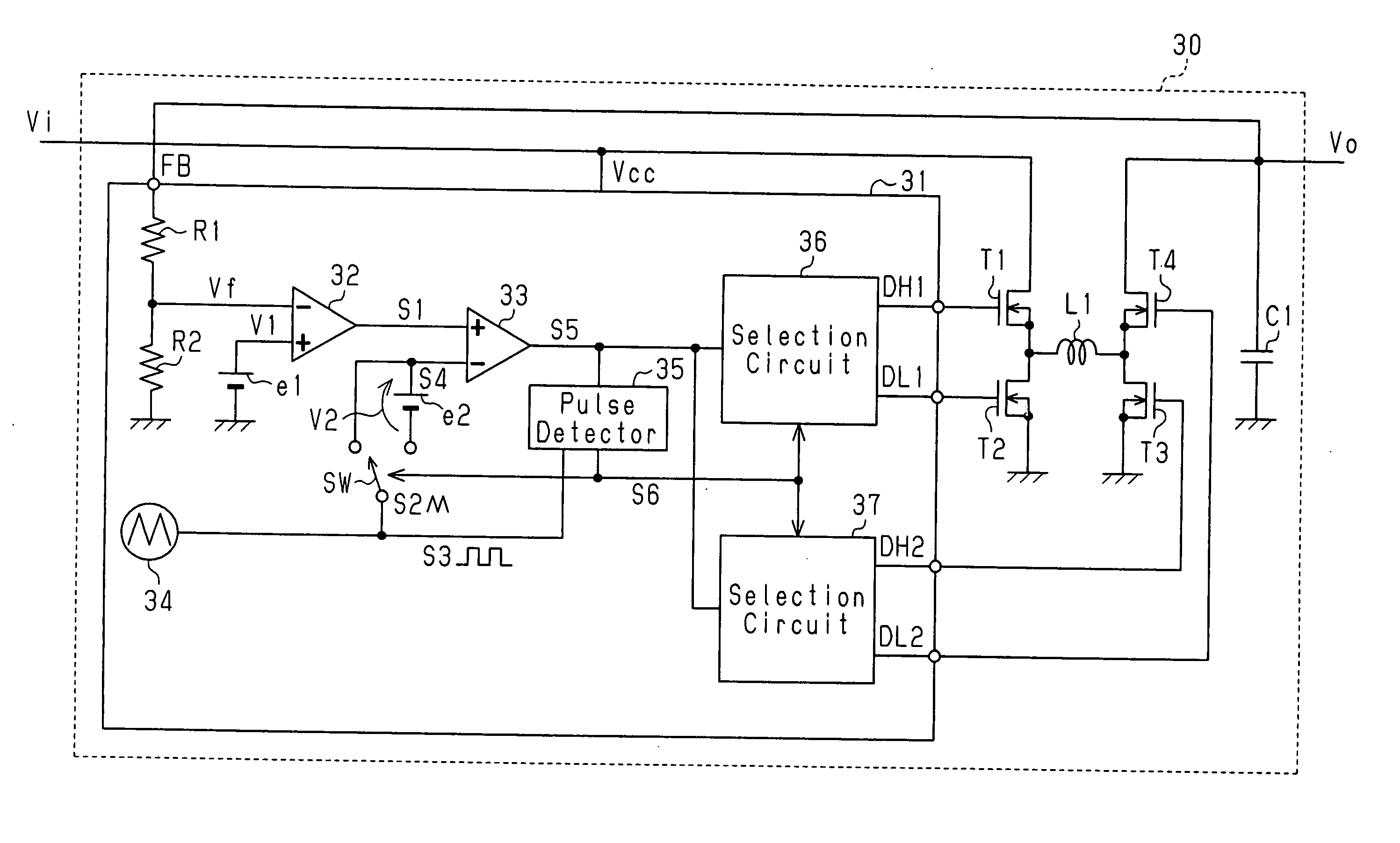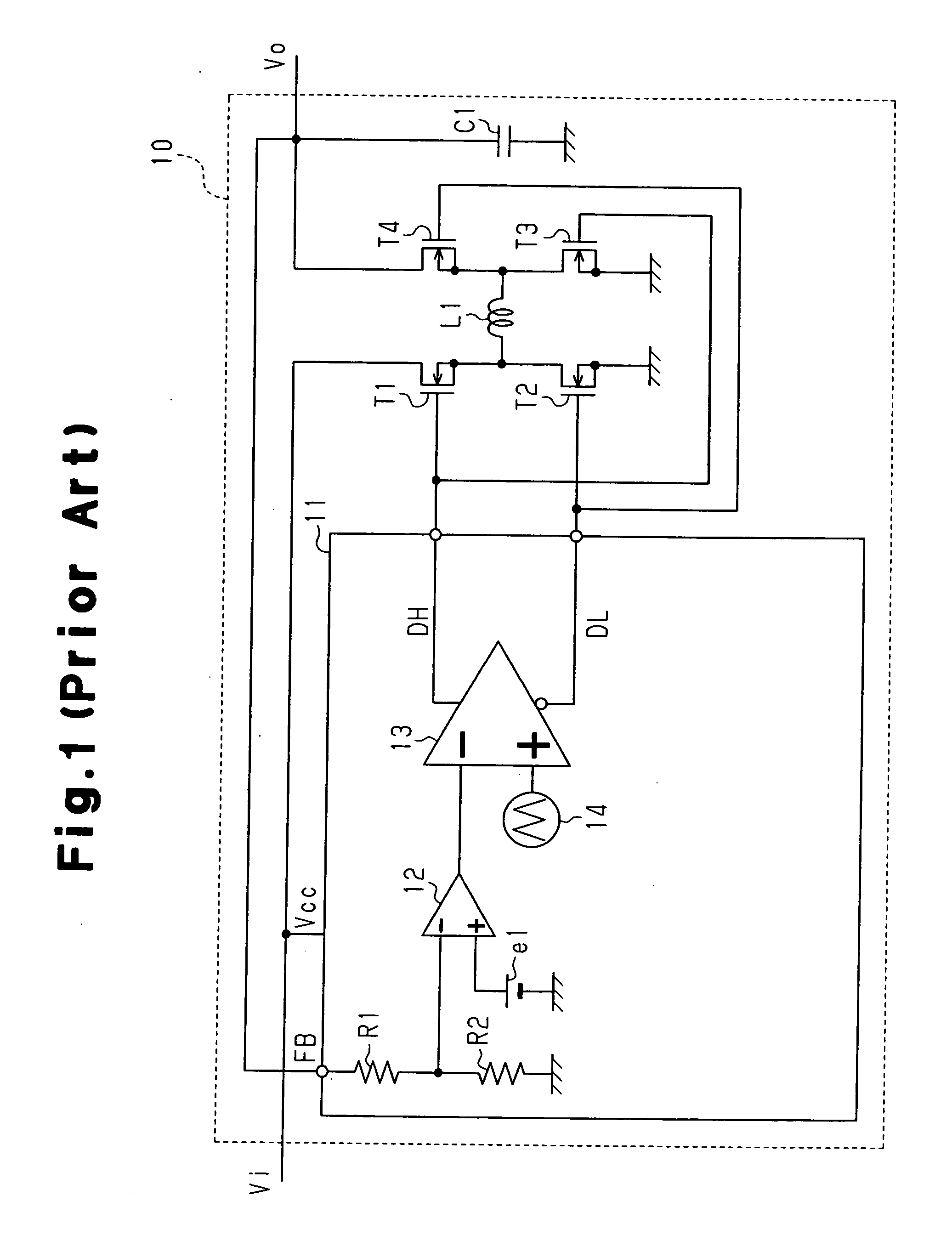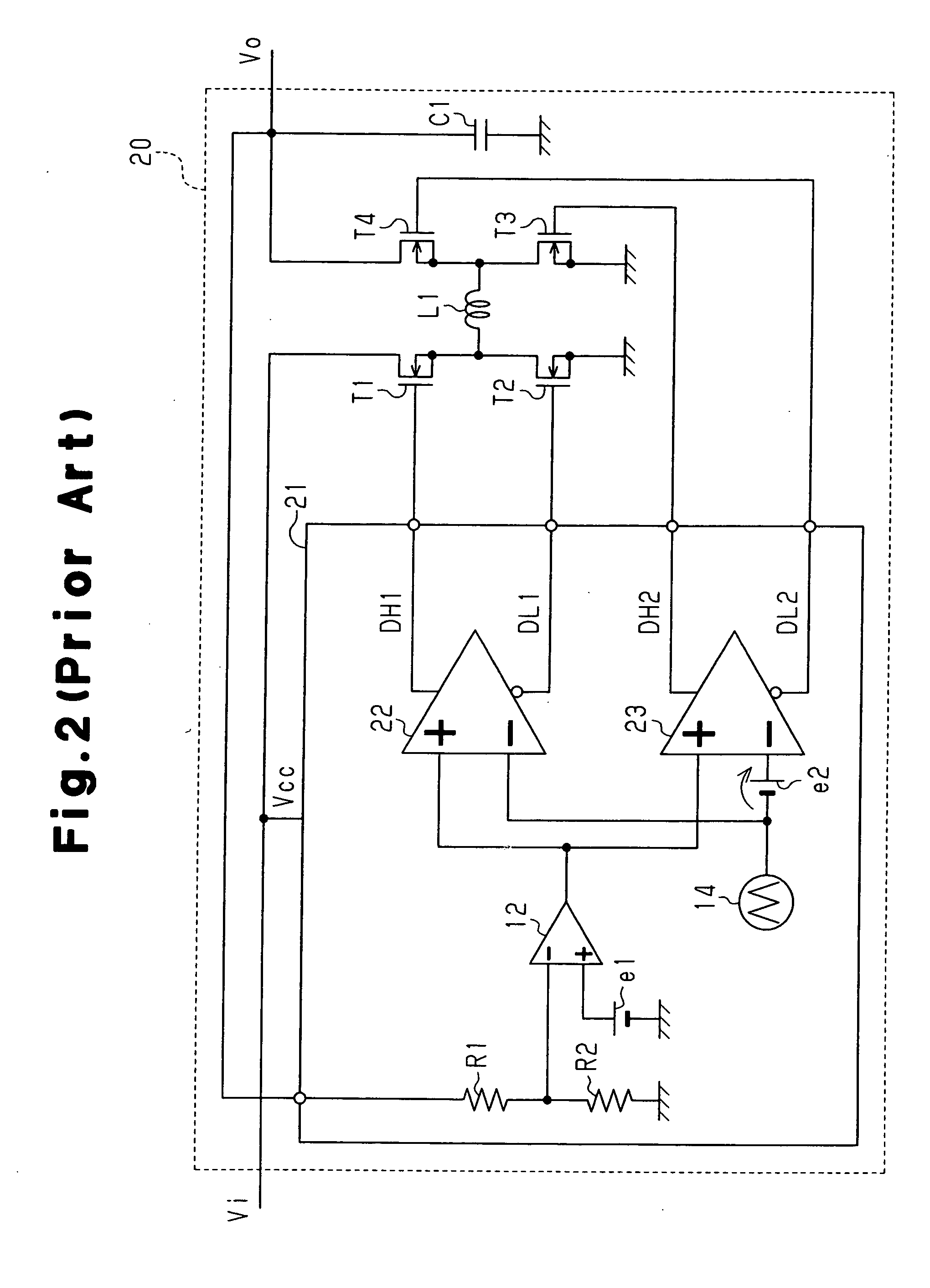Circuit and method for controlling step-up/step-down DC-DC converter
a dc-dc converter and step-up/step-down technology, applied in the direction of dc-dc conversion, power conversion systems, instruments, etc., can solve the problems that dc-dc converter b>20/b> fails to sufficiently reduce operation loss, and achieve the effect of reducing operation loss
- Summary
- Abstract
- Description
- Claims
- Application Information
AI Technical Summary
Benefits of technology
Problems solved by technology
Method used
Image
Examples
Embodiment Construction
[0034] A DC-DC converter 30 according to a preferred embodiment of the present invention will now be described with reference to FIGS. 3 to 8.
[0035] The DC-DC converter 30 includes a control circuit 31, output transistors T1 to T4, a choke coil L1, and a smoothing capacitor C1. Each of the transistors T1 to T4 is preferably an N-channel MOS transistor.
[0036] The control circuit 31 provides the gate of each of the transistors T1 to T4 with a control signal. More specifically, the control circuit 31 provides the gate of the first transistor T1 with a control signal DH1, and the gate of the second transistor T2 with a control signal DL1. Further, the control circuit 31 provides the gate of the third transistor T3 with a control signal DH2, and the gate of the fourth transistor T4 with a control signal DL2.
[0037] The first transistor T1 has a drain supplied with input voltage Vi and has a source connected to a first terminal (input side terminal) of the choke coil L1. The second tran...
PUM
 Login to View More
Login to View More Abstract
Description
Claims
Application Information
 Login to View More
Login to View More - R&D
- Intellectual Property
- Life Sciences
- Materials
- Tech Scout
- Unparalleled Data Quality
- Higher Quality Content
- 60% Fewer Hallucinations
Browse by: Latest US Patents, China's latest patents, Technical Efficacy Thesaurus, Application Domain, Technology Topic, Popular Technical Reports.
© 2025 PatSnap. All rights reserved.Legal|Privacy policy|Modern Slavery Act Transparency Statement|Sitemap|About US| Contact US: help@patsnap.com



